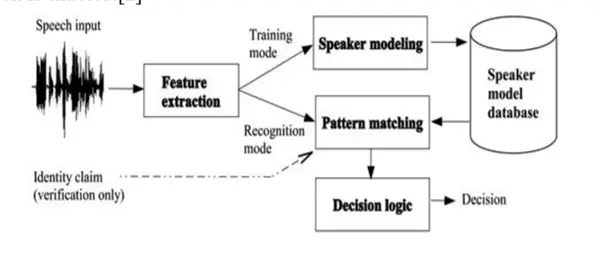Voice Recognition technology has revolutionized commerce and the use of home devices. It has taken center stage, but is it any different from typing a query into search engines? Let us find out, along with the reasons for its widespread adoption.

What is Voice Recognition
The technology analyzes sounds linked to Natural Language Processing (NLP). NLP is a branch of artificial intelligence that helps computers understand, interpret, and manipulate human language. It derives meaning from human languages by relying on machine learning techniques.
Reasons for widespread of Voice Recognition technology and its adoption
No conversation is leveraged properly if it lacks a faster pace of information delivery. Voice recognition not only fills this void but also unite all faster means of information delivery mechanisms under the common roof of digital transformation.
The following reasons have added to the rise and widespread Voice recognition technology.
- Makes Telephone banking more secure and convenient
- Use of Voice-activated bots
- Better at producing texts than punching words from a keyboard
- The ideal way to ease some of the travel annoyances and real-time translation
- Reconstructing conversations from videos
1] Makes Telephone banking more secure and convenient
Fraudsters or hackers can guess and get access to your banking PIN and Password, but they can’t replicate your voice. The AI-based voice assistant is sensitive enough to detect if someone is impersonating you or playing a recording. Thus, realizing the benefits of Voice recognition for banking, many banks worldwide are shifting to Voice Recognition to make the experience of telephone banking convenient and secure.
2] Use of Voice-activated bots
Chatting through text has its limits. Voice-activated bots have faster response times than chatbots. Moreover, plain robotic text often lacks personalized sentiments, making communication dull and, at times, even strenuous. Talking to a voice-enabled AI robot offers a different experience altogether. It is so satisfying and real that you might think you are having a conversation with a friend. Such a solution is enriched with a voice that eliminates the usual feeling of talking to just a machine.
Besides all, the voice-activated chatbot provides rich, correct and instant information.
3] Better at producing texts than punching words from a keyboard
Most users today spend immense amounts of time texting on Smartphones. But a smartphone’s miniature touch-based keyboard can be slow and frustrating to use, especially when the user wants to compose a long message. So, given the number of times users spend on smartphones and other mobile devices, it remains important to design an effective off-Desktop text entry method that can greatly reduce users’ frustration and improve efficiency.
Recent advances in speech recognition (thanks to the advent of deep learning models and computation) offer a solution to this problem. A recent study by the University of Washington and Stanford University found a voice-recognition system to be better at producing text than typing them on a keyboard. The study revealed text entry speeds, in words per minute (WPM), using speech were about 3.0 times faster than the keyboard for English (161.20 vs. 53.46 WPM).
4] Ideal way to ease some of the travel annoyances and real-time translation
Language occupies a central position among many things that define our travel experience. It is the main medium for communication. Speech or voice recognition has played an important role in enhancing this mode of communication by translating between languages. For instance, Skype Translator, an app utilizes the wonders of Machine Learning to listen and learn your spoken and written patterns. With its ability to translate text in 60+ languages it can help you land in a linguistic comfort zone, especially when you are away from home on a distant land.
5] Reconstructing conversations from videos
Innovations in voice recognition could prove beneficial in revolutionizing how criminal trials are conducted. For instance, decoding what is being said on CCTV footage at a crime scene could give vital insights into how a crime was committed or point to further suspects. Researchers at the University of East Anglia are conducting trials on visual speech recognition technology that could reconstruct conversations (by recognizing the appearance and shape of human lips) captured on video even without sound. This has remained one of the most challenging problems in artificial intelligence and, as such, has attracted the attention of researchers.
One of the main benefits of voice recognition technology is its ability to enable those with visual impairments to have the same access as those who aren’t visually impaired.
In the days to come, we can only expect Voice recognition and artificial intelligence to become more sophisticated. Hundreds of companies are already experimenting with integrating their products and services with digital voice assistants.
Image Source – IJRASET.